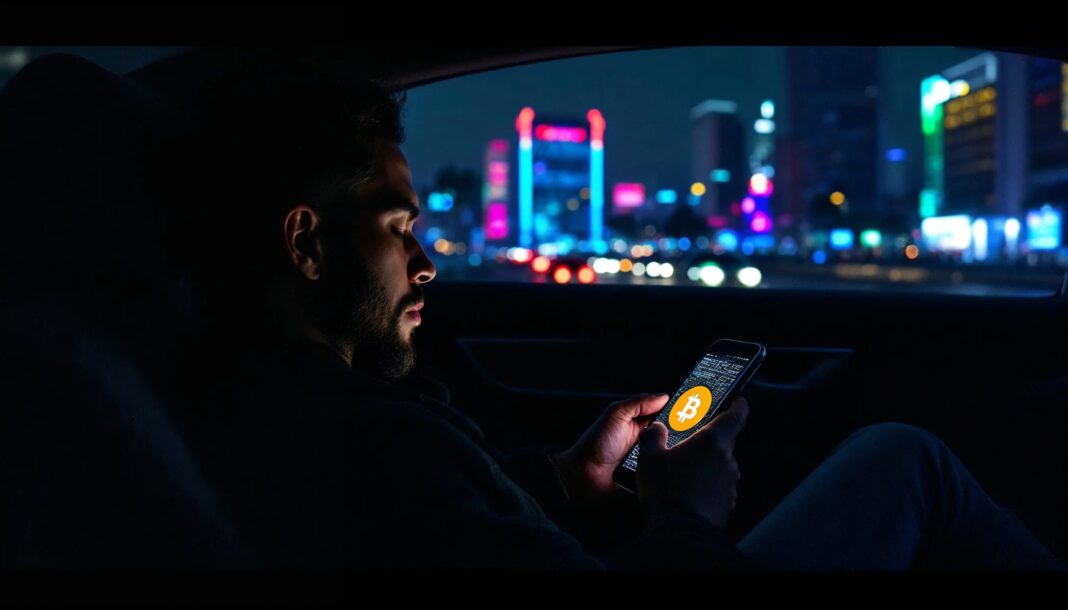Podcast Discussion: Deep Dive Into This Article.
In Medellín, a city once synonymous with narco-trafficking but now glowing with digital promise, an American tourist was recently drugged, abducted, and robbed of $123,000 in Bitcoin. The headline feels like a blend of Netflix thriller and crypto cautionary tale. But beneath the sensationalism lies a hard truth the Web3 world rarely addresses:
We’ve built trustless systems. But humans are still very, very trusting.
From Crypto Capital to Crime Scene
The story begins like many others in Medellín these days. A tourist, perhaps a digital nomad, orders an Uber to head back to his hotel. What arrives instead is an impersonator—a fake driver with real intent. He gains the traveler’s trust, offers a ride, maybe a drink, and shortly after, the tourist blacks out.
When he wakes, the crypto in his mobile wallet—$123,000 worth of BTC—has vanished.
There was no rug pull, no protocol hack, no phishing email. This was a low-tech crime in a high-tech space. And that’s what makes it terrifying.
The Vulnerability of Self-Custody in the Physical World
Crypto evangelists love the mantra: Not your keys, not your coins. But there’s an unspoken corollary: If someone gets to you, they get to your keys.
This incident is a painful reminder that while decentralized tech removes reliance on institutions, it also removes protective barriers. Banks have fraud departments. Credit cards can be reversed. Traditional accounts come with passwords you can forget.
But in crypto? Ownership is immediate. Access is final. Loss is permanent.
This isn’t just about operational security (OpSec). It’s about understanding that your physical self is now the front line of your digital bank.
Medellín: A City Caught Between Web3 Promise and Legacy Problems
It’s no coincidence this happened in Medellín. The city has, in recent years, become something of a Web3 darling—a picturesque haven for developers, nomads, and Bitcoiners fleeing the regulatory chokeholds of the West.
With lush mountains, fast internet, and a low cost of living, Medellín has marketed itself as the new Bali for blockchain. But the contrast between shiny new co-working spaces and deeply rooted socio-economic challenges is jarring.
Crypto wealth flowing into a city still healing from its past creates inevitable tension. And that tension sometimes erupts into targeted crime against outsiders with assets in their pocket—and no local safety net.
The Illusion of Anonymity, the Reality of Exposure
Crypto users often believe that pseudonymity is protection. You don’t use your real name. You transact with wallets, not identities. You blend in.
But here’s the problem: when you’re a tourist in a foreign country paying in Bitcoin, you’re not invisible—you’re a walking signal.
Locals know who’s spending crypto. They know which neighborhoods the nomads live in. They know that if you’re holding your own keys, you’re probably doing it on a device you’re carrying in your pocket. Combine that with a few drinks, and the security threat becomes painfully real.
This isn’t FUD. It’s context.
The Overlap of Web3 and Real-World Risk
The crypto space has done a phenomenal job educating users about digital threats—scam tokens, pump-and-dumps, exploit vectors. But there’s been far less conversation about physical threats to digital wealth.
In an age where wallets are mobile, and biometrics can be used to unlock them, your face and fingerprint can be exploited under duress. You can be coerced to unlock apps. Drugged into handing over access. Threatened with violence to give up phrases or disable time locks.
The attack surface has expanded—from code to context.
Toward a Safer Crypto Culture
This event should be more than a viral Reddit post. It should be a catalyst for a wider discussion about what it truly means to be sovereign in the Web3 era. Because sovereignty without safety is a false sense of freedom.
Here’s what the crypto community needs to take away:
1. Hardware Over Hot Wallets
Avoid storing large amounts of crypto on mobile apps when traveling. Use cold storage or multi-sig wallets. Assume your phone can be compromised.
2. Geo-Aware Protocol Features
We need more wallets with geographic risk triggers. For example, if a transaction is attempted in a high-risk zone, prompt a security delay or require secondary verification.
3. Decentralized Panic Protocols
Could DAO-based protocols include an “emergency transfer” function—an on-chain SOS that allows temporary freezing based on social consensus or preset triggers?
4. Community Safety Standards
Digital nomad groups should circulate crypto safety protocols specific to the regions they operate in. Travel + crypto is an amazing combo—but one that must be paired with smart hygiene.
Bridging Digital Sovereignty and Real-World Awareness
Crypto promised us control, freedom, and borderless finance. It delivered on all three. But it also removed some of the safeguards we didn’t realize we needed.
In the race to decentralize everything, let’s not forget to re-centralize the one thing that matters most: our own safety.
This story isn’t about blaming the victim or fearing travel—it’s about upgrading our mindset. The threats have changed. So must our defenses.
This article reflects the opinions of the publisher based on available information at the time of writing. It is not intended to provide financial advice, and it does not necessarily represent the views of the news site or its affiliates. Readers are encouraged to conduct further research or consult with a financial advisor before making any investment decisions.



